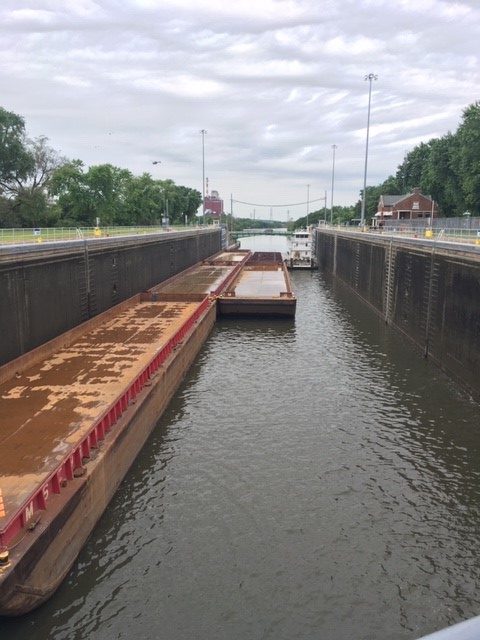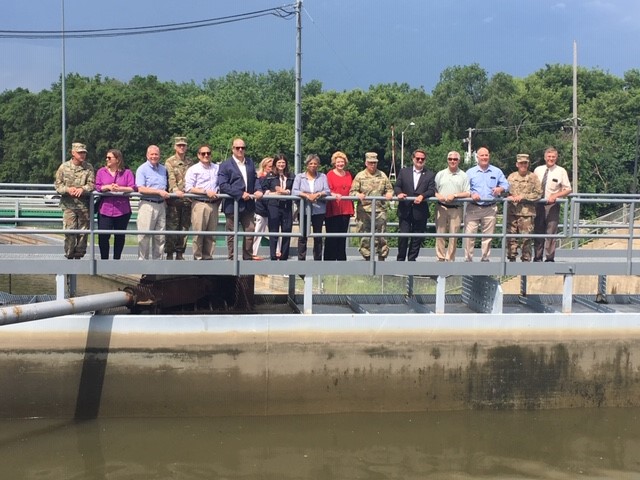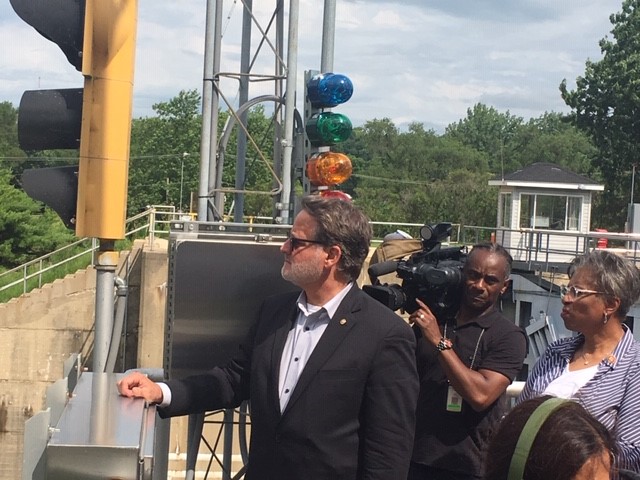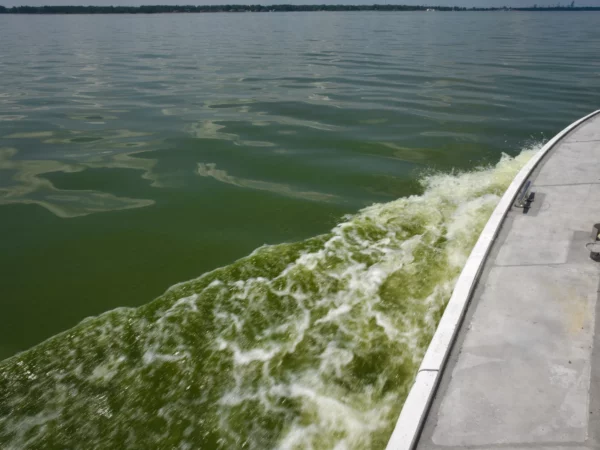
With the federal government writing trillion-dollar checks to fight COVID-19, support collapsing businesses and feed cash into the economy via stimulus checks, Great Lakes legislators and advocacy groups are seizing on the opportunity to secure federal funding while the money still flows.
Recently the senate committee that oversees water infrastructure projects unanimously approved legislation authorizing $18 billion for projects nationally.
Authorization legislation gives the appropriation committees approval to fund the project, but that has to be negotiated.
Included in that legislation was a provision that the federal share of the Army Corps of Engineers project to stop Asian carp be increased from 65 percent to 75 percent of the estimated $831 million project, according to a press release from Michigan Sen. Gary Peters.
But the action, if it ultimately gets through the legislative hurdles, comes too late to advance in 2020, according to Marc Smith, who tracks the Asian carp issue for the National Wildlife Federation in Ann Arbor.
The project at the Brandon Road Lock and Dam in the Chicago waterways system is thought to be a logical choke point to prevent the carp advance.
“They (Illinois) still claim they support the project,” Smith told Great Lakes Now, “but they’re still wrangling with the Army Corps over the design agreement.”
Illinois had proposed changes to the agreement that the Army Corps rejected, Smith said.
“All this has caused too long a delay and as a result Illinois has missed the window this year for federal investment in the project,” Smith said.
Illinois DNR spokesperson Rachel Torbert characterized the discussions between the agency and the Army Corps as “ongoing.”
“The state of Illinois continues to discuss with the U.S. Army Corps of Engineers language in the Preconstruction, Engineering and Design Agreement as well as federal and non-federal funding,” Torbert said.
The project can’t proceed without a non-federal sponsor.

Michigan congressional delegation visiting Brandon Road Lock and Dam in 2019. (Photo by Gary Wilson)
Reluctant governors
The plan to stop Asian carp at the Brandon Road Lock and Dam has been one of the region’s highest priorities for years given the havoc the voracious feeder could wreak on the Great Lakes ecosystem, its $7 billion fishing industry and tourism.
But successive Illinois governors from both political parties have not supported the plan since its inception in 2014 out of fear that physical modifications to the infrastructure could disrupt the shipping industry. Instead, they’ve relied on commercial fishing to keep the carp at bay, an effective action in the short term but not seen as a long-term solution.
In early 2019, Brandon Road advocates saw hope that the Illinois logjam would be broken when new governor J.B. Pritzker expressed qualified support for the plan. But as time passed Pritzker started to question its burgeoning cost, which increased from $275 million to the current $831 million.
Illinois has yet to sign on as the non-federal sponsor.
Illinois had debt and budget problems long before COVID-19 began and the pandemic will certainly add strain to the state’s finances, making it more difficult for Illinois to take on the expense of fighting Asian carp.
Because of the delay and its own budget issues, Michigan pulled back $8 million it had set aside to help Illinois fund the design work.
In addition to the Asian carp funding, the senate committee proposed an increase in funding for Great Lakes restoration. The U.S. EPA-managed restoration program has been stable at $300 million since 2010 and survived two attempts by the Trump administration to eliminate funding for the program.
Congress overrode the proposed cuts, and the U.S. House recently increased restoration funding to $320 million. The senate proposal would bump it to $375 million. The final amount will be determined by a conference committee consisting of the two legislative bodies.
Great Lakes cleanups depending on federal funds
Most Great Lakes restoration projects, unlike the Brandon Road project, are 100 percent federally funded. But cleanup of the toxic legacy sites known as Areas of Concern are funded under the Great Lakes Legacy Act, which requires a 35 percent cost share borne by the state or other entities in the state such as non-profits.
Michigan has eleven Areas of Concern that still require work, including the Detroit and Rouge rivers.
For many years, Michigan has used funds from the Clean Michigan Initiative to meet the required non-federal match for toxic site cleanup, Department of Environment, Great Lakes, and Energy spokesperson Hugh McDiarmid told Great Lakes Now.
But COVID-19 is driving significant budget cuts, with Michigan facing a potential $2.6 billion shortfall.
“The Clean Michigan Initiative funding is mostly gone and what little we have left is mostly committed to a few remaining projects, so irrespective of the recent budget shortfall, we are not well-positioned to provide additional match for these projects anyway,” McDiarmid said.

Sen. Gary Peters at Brandon Road Lock and Dam. (Photo by Gary Wilson)
McDiarmid said EGLE is working with non-profits and parties who may have been responsible for the initial pollution to provide the necessary matching funds.
The Michigan DNR receives EPA restoration funding for invasive species control and habitat restoration, according to spokesperson Ed Golder, who said some of the projects require matching funds.
“As we work through addressing the budget shortfalls, we will know more about the viability of those projects with matching dollars required,” Golder said.
Golder said the agency would look to federal agencies to develop funding solutions and for flexibility so work can continue.
All the projects and funding must still be approved by the full senate.
Catch up on Great Lakes Now’s reporting on the Asian carp problem:
Divide: Federal agencies, advocates differ on Asian carp strategy
Study: Asian carp could find plenty of food in Lake Michigan
API key not valid. Please pass a valid API key.Featured image: Brandon Road Lock and Dam. (Photo by Gary Wilson)




